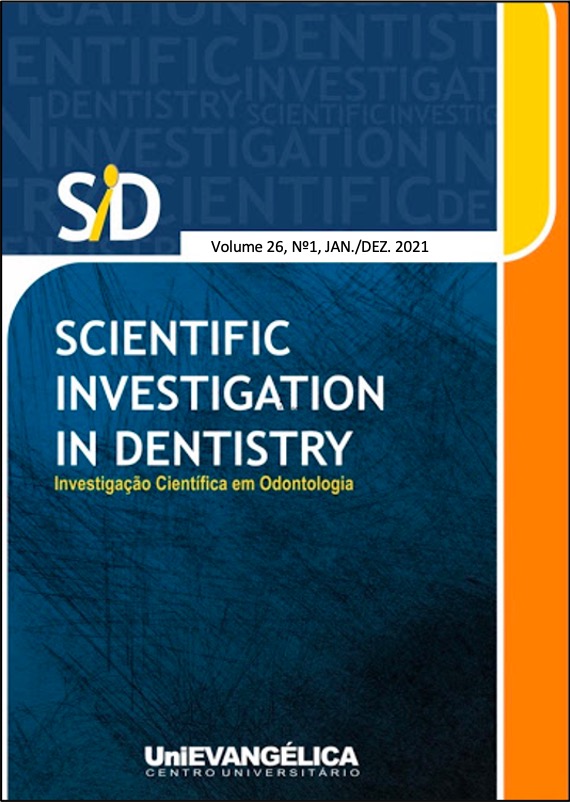Evaluation of the mechanical strength of compound resin incorporated with modeling liquids
DOI:
https://doi.org/10.37951/2317-2835.2021v26i1.p76-84Abstract
Objective: Evaluate the mechanical strength of nanoparticulate composite resin when incorporated with styling liquids. Material and methods: Thirty specimens were made for diametrical tensile testing, based on Filtek Z350 XT nanoparticulate composite resin, subdivided into three groups (GC, G2, G3), namely: GC (control group) with pure composite resin and the groups G2 and G3 that were incorporated adhesive in the composite resin until its complete homogenization, being the G2 with the conventional two-step adhesive system and the G3 with the three-step adhesive system, only the adhesive. The samples were submitted to a diametrical traction test in an Instron 1100 universal testing machine and the data obtained were submitted to a statistical test at a significance level of 5%. Results: Mean and standard deviation were obtained for the Diametral Tensile strength data in comparison between groups by ANOVA and Tukey tests, being GC (43.653± 6.41); G3 (43.292 ± 7.00) and G2 (31.570 ± 9.61). It was possible to observe that the control group had the highest value of diametrical tensile strength with a statistically significant similarity to the group using pure adhesive (G3). Both were statistically different from the group using adhesive + primer (G2). Conclusion: The use of pure adhesive does not change the mechanical properties of the composite resin in terms of diametral tension, however the use of adhesive + primer as a styling liquid for composite resins, aiming at presenting a negative interaction with a significant loss of strength of the restorative material.
Downloads
Published
Issue
Section
License
Declaro que o trabalho de minha autoria foi submetido apenas para este periódico e por isto, não sendo simultaneamente avaliado para publicação em outra revista. Nós autores, acima citados, assumimos a responsabilidade pelo conteúdo do trabalho submetido e confirmar que o trabalho apresentado, incluindo imagens, é original. Concordamos em conceder os direitos autorais ao periódico Scientific Investigation in Dentistry.

